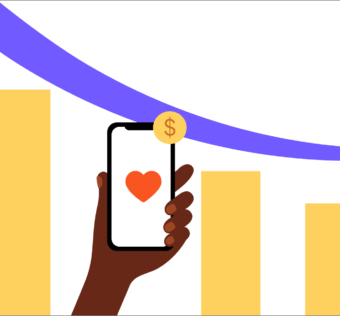How Does Weather Impact Giving?
In Gobbler’s Knob, Punxsutawney Phil just predicted six more weeks of winter so brace yourselves for cold, yucky weather. It’s February, a month known for snow, thunderstorms and wild fluctuations in temperature as late winter and early spring wrestle their way through the shortest month of the year.
What is our relationship to the weather? Many people check their weather app in the morning to see if they need an extra coat or umbrella. On the other hand, some are constantly surprised by the temperature, the color of the sky, and what may or may not be falling from it.
Regardless of how up-to-the-minute your donors are, weather impacts clothes, plans, and mood. Surprisingly, it also impacts giving, as demonstrated by a Givelify research study based on data, “Can Weather Affect Donations? Evidence from the world’s largest giving app.” In this post, we will look at how weather impacts giving, why the weather impacts giving, and provide tips for how to keep your donors and tithers giving consistently even during the cold, wet days of February—or any other month.
How Weather Can Impact Giving?
The 2016 study found that “there is less giving on days with low temperatures, high cloud cover, and high precipitation.” Moreover, the researchers were able to conclude that the effect of weather is the same on average users and power users: the donation size decreases and the giving frequency also goes down. (Interestingly, the study also found that most people give on Fridays, which is often payday, and Sundays, the day when most church services are held.)
In the study, the researchers looked first at existing literature on charitable giving, factors that impact app use, and how weather affects online behavior in general. Then, focusing on 18 cities over a 2-year period, they compared Givelify donations with precipitation, temperature, and cloud cover data from PRISM (Parameter-elevation Regressions on Independent Slopes Model) and NOAA (National Oceanic and Atmospheric Administration). They looked at average users as well as those they termed “power users,” the most active users on the Givelify platform.
The study concluded that “a one standard deviation increase in temperature led to a 14% increase in intergroup conflict. Here, a one standard deviation change in temperature is around eight degrees Celsius, so a one standard deviation decrease in temperature from 12.5 degrees Celsius to 4.5 degrees Celsius would decrease giving by between 3.95% (if measured as the number of donations on Sundays) to 24.6% (if measured as the total amount given on Fridays).”
Why Weather Impacts Giving?
So, why do cold, gray, rainy days mean less giving? The results from the study support what has been discovered before: “Weather . . . is a mood shifter.” As the weather deteriorates, so does people’s outlook on life. Your supporters may feel anxious (if the weather is severe), deflated (if they have to cancel plans), sluggish (if they are stuck at home), or sad (if they are affected by the low light and cloudy skies). Givers, though consistent in the past, may become more focused on themselves and their immediate—unpleasant or unexpected—circumstances. They might not be in the frame of mind to give to their favorite church or nonprofit with joyful hope. Instead, they bunker down and wait for the bad weather to give way to a nicer day.
What This Means for You and Your Donors?
For nonprofit and faith leaders, what can you do to ensure donors give, even when the weather works against you? Now that we understand the research behind bad weather and lower rates of giving, what should you do? First, remember that joyful giving means greater happiness and satisfaction. Here’s a few tips to get your donors feeling good and giving despite the winter blues:
- Make your “ask” on a Friday or Sunday when giving is already at a high.
- On colder, rainy days, remind your donors and congregations how giving actually improves mood.
- Share impact stories that demonstrate where the money goes. An inspired giver is a happy giver.
- Tell donors to set up a notification on their smartphone or mark their calendar to remind them to give regularly.
Even though Givelify has a recurring feature available to set-it and forget-it, we find that most donors prefer to take a more active role in their giving, preferring to give their offerings through 3 easy taps, and following the gift with a specific message of gratitude to the organizations they support. In turn, our organizations enjoy the engagement and connection they have with their donors by being able to respond to those messages of gratitude with personalized memos. This way—regardless of the weather, your mood, or schedule—you will remember to give. You will be glad that you did, and your church or nonprofit will be so thankful for your consistent support.
Want to read more about regular giving? Read Volunteer Tips: Don’t Be a Fair-Weather Friend.
“Can Weather Affect Donations? Evidence from the world’s largest giving app.” In Proceedings of ACM CHI conference (CHI ‘19). ACM, New York, NY, USA. https://doi.org/10.475/123_4.



